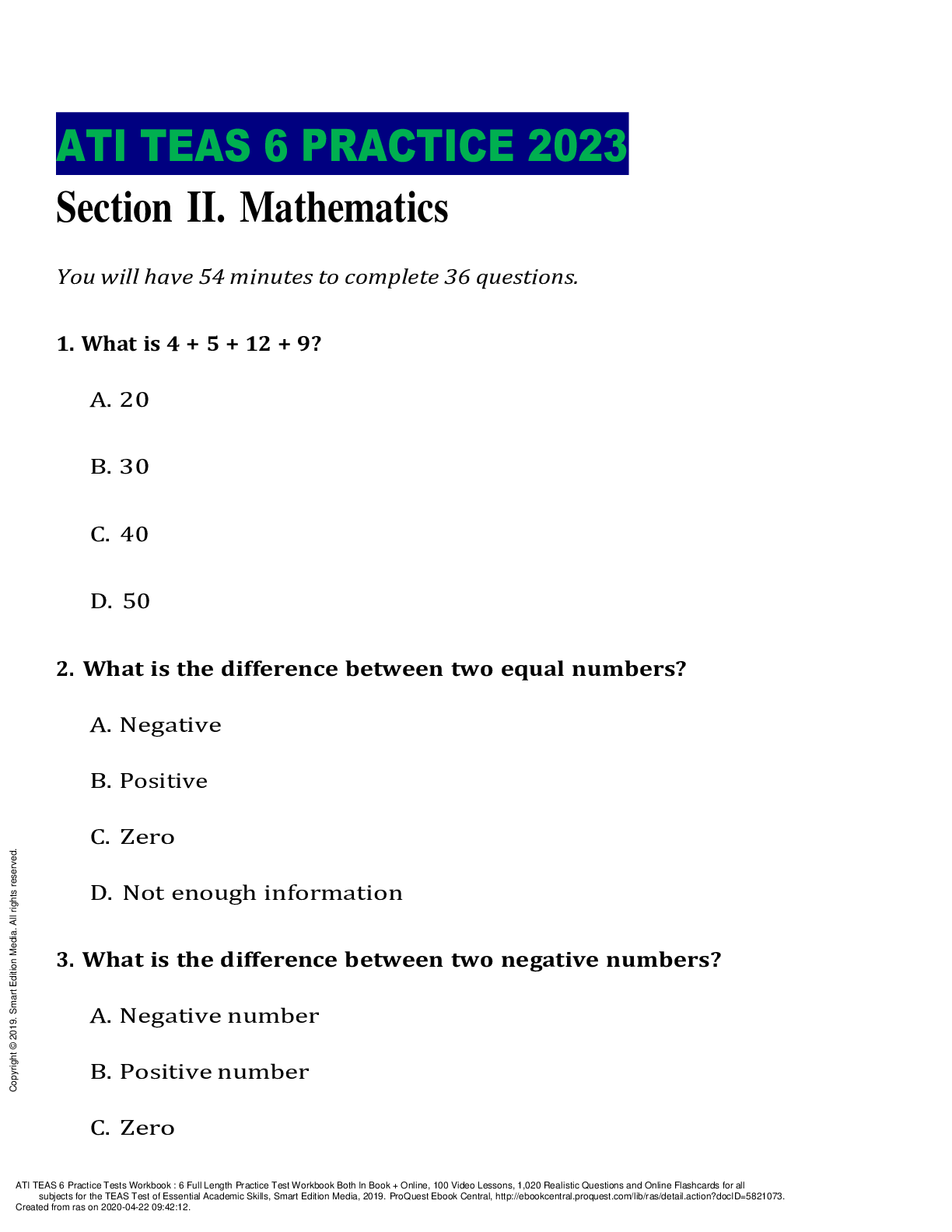Law > STUDY GUIDE > Criminology; Crim_Mid_Term_Notes latest with summar for your study (All)
Criminology; Crim_Mid_Term_Notes latest with summar for your study
Document Content and Description Below
Crim_Mid_Term_Notes Module 1: Instead crime -> acts Crime does not exist only acts Certain people are not seen as criminals (children, elderly patients etc.) No clear consensus on crime Distorted... image of crime (first instinct is not a man in a suit as criminal) Crime as a public issue (C. Wright Mills) Modern obsession with crime (CSI effect) - Reflection of our society - Try to prevent it/ control it - Crime as sociological problem (Bernie & Messerschmidt) - Plays into our fears Crime in the media - Images of violent crime dominate - Distorted images of crime Crime reflects public culture (ex marijauna being legal) Why do we punish crime? Often problematic/ does not prevent crime How is crime a social construct? - Most have violated the law in some way but we are not all “criminals” - Crime is not a crime until it is declared against the law - No clear consensus - Range of criminality - Crime varies across time and space Module 2: Pre Reading: Louk H.C. Hulsman Critical Criminology and the Concept of Crime Normal outlook on crime: - Inclined to see criminal events as exceptional - In this view criminals are seen as a special group of people - Public debate about the criminal justice system (cjs) and its possible reform always takes place in our (western) society - Special form of coop between oilicu, courts, prison system is difficult to control - Attempts at reform often have completely different results from the intent - Structure of c.j.s have very few common aims (little or no coordination by sub systems) - Hardly any feedback of information in c.j.s - Conflicts that occur between persons or groups are defined in the penal system not as the parties involved (parties have very little influence) - No common denominator in criminals - all that they have in common is that the c.j.s is authorised to take action against them - NO ONTOLOGICAL REALITY OF CRIME Marxist Crim.: believed “crime” was a prod of the capitalistic system and that crime would disappear if a new society took birth - Disappear of crime was seen as a disappearance of “problematic situations” Critical Crim.: problematized the class biased and the “irrational” aspects of the process of primary and secondary criminalisation -> has argued for partial criminalisation, more restrictive, radical non intervention focus on “white collar crime” What does it mean when we do not reject and problematize the concept of crime? - We are in at catastrophic view on society - Info base depends on the institutional framework of criminal justice Primary criminalisation: - Ideological foundation for centralised law as a basis for criminalisation - lies in a legal view on the world -society has a key role -society consists on the formal institutions of the state and the individual Unequal secondary criminalisation and its link with the mass media - Urban areas in the industrialized world are characterized by the extreme social segregation that occurs within them - Segregated by: class, age etc. - Creates a situation of mass ignorance - Brings about a mystification about the world which is in contact with criminal justice Dark figure - Unrecorded crime, systematically underestimated - Great importance - Not yet been integrated in the crim theory and in criminal policy practice Interactionism - Made us aware of the importance of defining processes from the construction and the understanding of social reality- how different power relations influenced the social reality - Critical criminology has to abandon a catastrophic view and take an anascopic view Crime Myths - Violent crime is out of control - Youth crime is out control Other crimes (ex corporate) are not dealt with in the same manner as street crime Developing an Anascopic View - When does trouble occur: trouble can be defined as that situation which occurs when (1) people are not ritualistically linked to a relatively similar sense of how life is and should be structured and (2) the lack of such links results in conflict over ways of thinking, feeling and acting (Pfohl) - Trouble occurs also when “nature” interferes differently from the way we expect it to behave Pfohl 2 types of rituals 1) When successfully enacted prevent trouble, primary ordering 2) Attend to the presence of “trouble” rituals of reordering (when successful they curtail or contain trouble) Problematic situations can not be eradicated from society More important for structures to promote growth rather than alienation [Show More]
Last updated: 2 years ago
Preview 1 out of 52 pages

Buy this document to get the full access instantly
Instant Download Access after purchase
Buy NowInstant download
We Accept:

Reviews( 0 )
$5.00
Can't find what you want? Try our AI powered Search
Document information
Connected school, study & course
About the document
Uploaded On
Aug 21, 2022
Number of pages
52
Written in
Additional information
This document has been written for:
Uploaded
Aug 21, 2022
Downloads
0
Views
53




